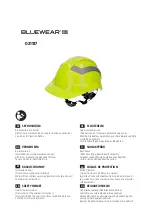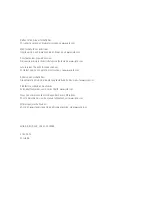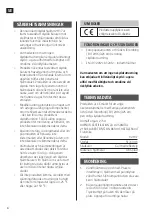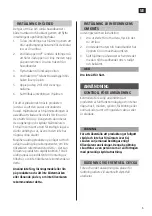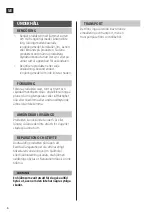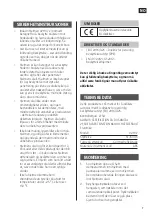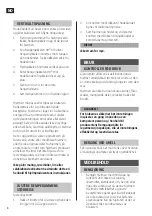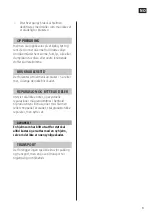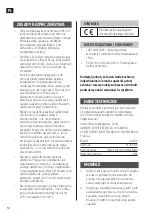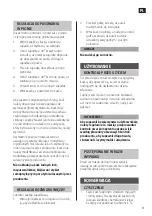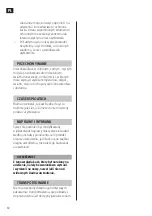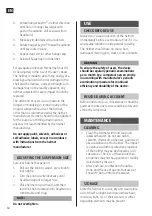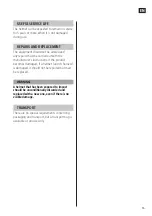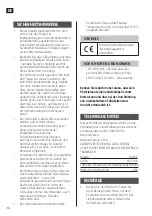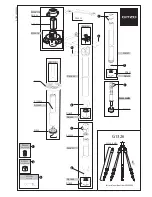
EN
13
REGULATIONS AND STANDARDS
• (EU) 2016/425 – Regulation for personal
protective equipment (PPE).
• EN 397:2012+A1:2012 – Safety helmets.
However, always remember that no item of
PPE can provide full protection and care must
always be taken while carrying out the risk-
relation activity.
TECHNICAL DATA
This product is CE marked to demonstrate
compliance with the EU regulation for personal
protective equipment (EU) 2016/425.
Notified Body: 2754
ALIENOR CERTIFICATION ZA DU SANITAL
21 RUE ALBERT EINSTEIN 86100 CHATELLERAULT
France.
Model
021137
Size
51-63 cm
Colour of shell
Yellow with reflective tape
Material in helmet shell
ABS
ASSEMBLY
1. Turn helmet upside down. Place
suspension inside helmet with brow pad
to ward front bill. Shock liner should
remain inside the helmet shell.
2. Bending the hanger key outward at hinge,
insert key into respective key slot. Push key
firmly until it locks into place. Repeat for
each hanger key.
ADJUSTING FOR VERTICAL FIT
The headband may be raised or lowered in the
front and/or back by repositioning the hanger
keys.
1. Remove suspension from helmet by
pulling up on the hanger keys until they
pop out of the helmet.
SAFETY INSTRUCTIONS
• This industrial safety helmet 021137 is
primarily intended to protect the wearer
from head injuries and brain damage as a
result of falling objects in an industrial
environment. See the warnings and
instructions for correct usage.
• Be aware that no safety equipment can
provide full protection – always act
carefully and exercise sound judgment
when work involves risks.
• The helmet is only intended to protect the
head of the wearer by reducing and
distributing the force of falling objects
from above that hit or penetrate the shell
of the helmet. The helmet is not intended
to provide protection from impact or
penetration on the sides of the shell or to
the face or neck, even if it does provide
some protection from light knocks and
blows in these areas.
• Never modify the helmet in any way or
remove any components, unless
recommended by the manufacturer – this
can reduce the safety function of the
product. Never attempt to adapt the
helmet to mount accessories, unless
recommended by the manufacturer.
• Do not use paint, solvent or glue on the
helmet, or put stickers etc. on it, unless
recommended by the manufacturer.
• The shell of the helmet and the lining are
intended to be damaged or partially
destroyed when subjected to impact – thus
absorbing the impact energy and protecting
the wearer of the helmet. A helmet that has
been exposed to severe impact should
therefore always be replaced, even if there
is no visible damage.
• Do not let the helmet touch live
equipment or expose it to temperatures
lower than –25°C or higher than 150°C.
SYMBOLS
Conforms with the requirements
in the relevant EU regulations.

